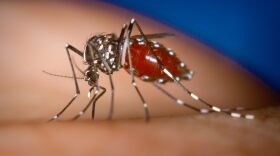The Red Hill Community Representation Initiative is in a spat with the Navy over its absence at a meeting last week. The group points to what it calls a lack of transparency from the Navy Closure Task Force - Red Hill.
It’s the latest tension to emerge over the water crisis, and it's not too far from two key themes of trust and disruption identified in a new study of the community’s response to the 2021 fuel leak at Red Hill.
The state Health Department asked the U.S. Centers for Disease Control and Prevention to study the community’s recovery in the wake of the fuel spill. Vidisha Parasram worked as an Epidemic Intelligence Service fellow for the CDC in the year following the spill.
"Here was this community that was directly impacted, that had to leave their safe space and was still dealing with the COVID-19 virus, because it's January 2022, and they had to move to another location just because their water was contaminated," Parasram said.
She recalls going out into the community, sharing the QR code for the survey, and having people share how difficult the spill was on their lives.
"They had to go out and buy water, or they had to move their kids from back and forth between base schools, where their kids go to school, and the location of where their hotel room was. So many families told us that they went to the hotel room to shower and stay there in the morning, and then they would drive back to the base," she said.
Parasram said that most people were getting their information on Facebook or in military groups on the app.
"I'm glad to see that change as the response continued and as the leak unfolded, but it was frustrating. It was frustrating to kind of know that, yeah, there's really great information out there and on a website, but not on Facebook initially," she said.
Parasram said they documented that the community had the skills needed to respond to the incident as they were able to get information and spread it to community members and businesses.
"I think that's where public health entities and emergency response leadership, that's where they can take the learnings from this and say, 'All right, we need to meet the community where they're getting their information. We need to go to those informal networks and work with community leaders and work with just community members to understand where they're getting their information, and go there and distribute it in a way that's understandable,'" she said.
She said the level of community cooperation was surprising.
"We also were really surprised at how the business community and community members and organizations worked together to go out and get water for each other — whether that was Costco runs, it seemed like a lot of businesses kind of shared that burden and work together to do that," she said.
To read the study, click here.
This interview aired on The Conversation on Dec. 17, 2024. The Conversation airs weekdays at 11 a.m. on HPR-1.






